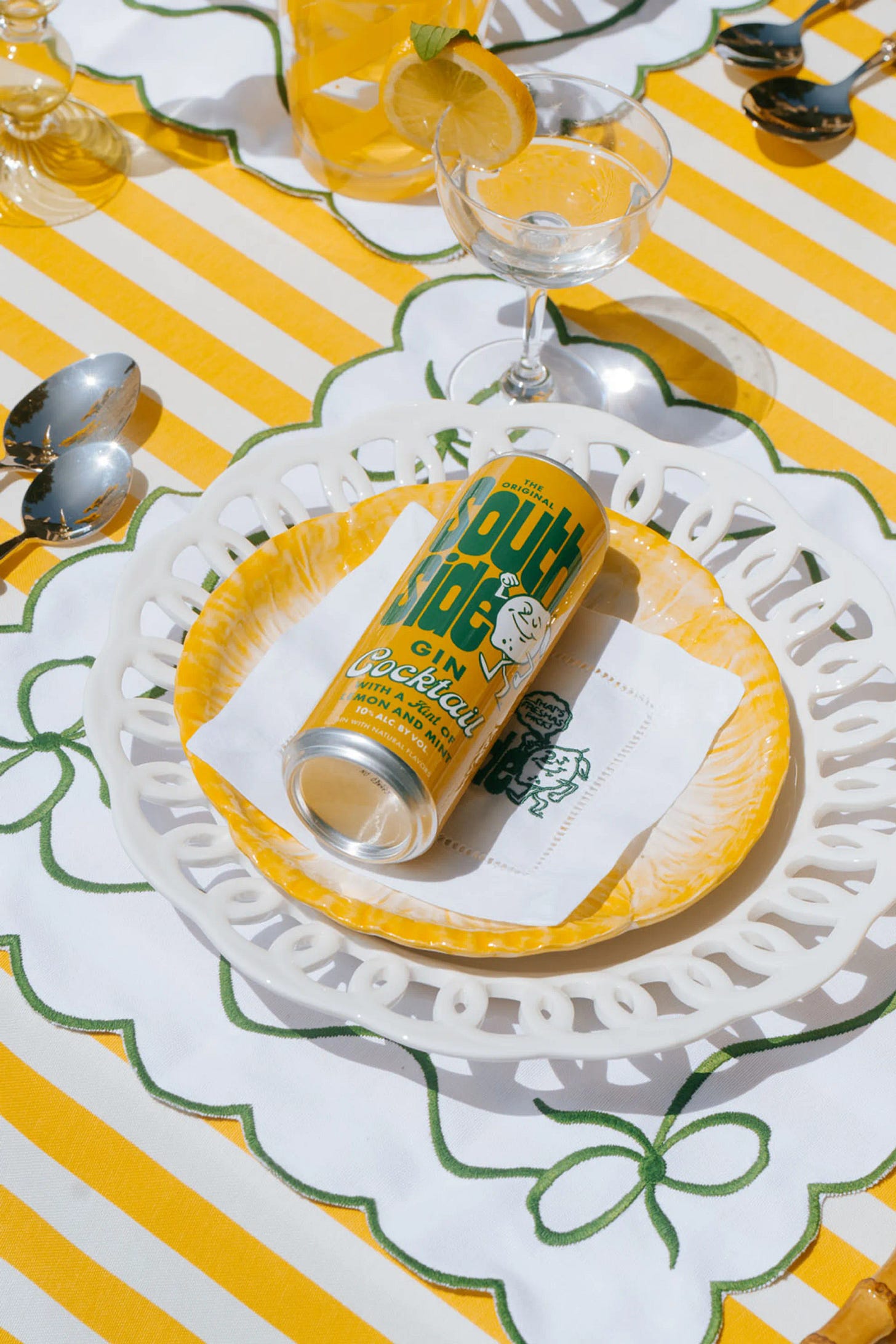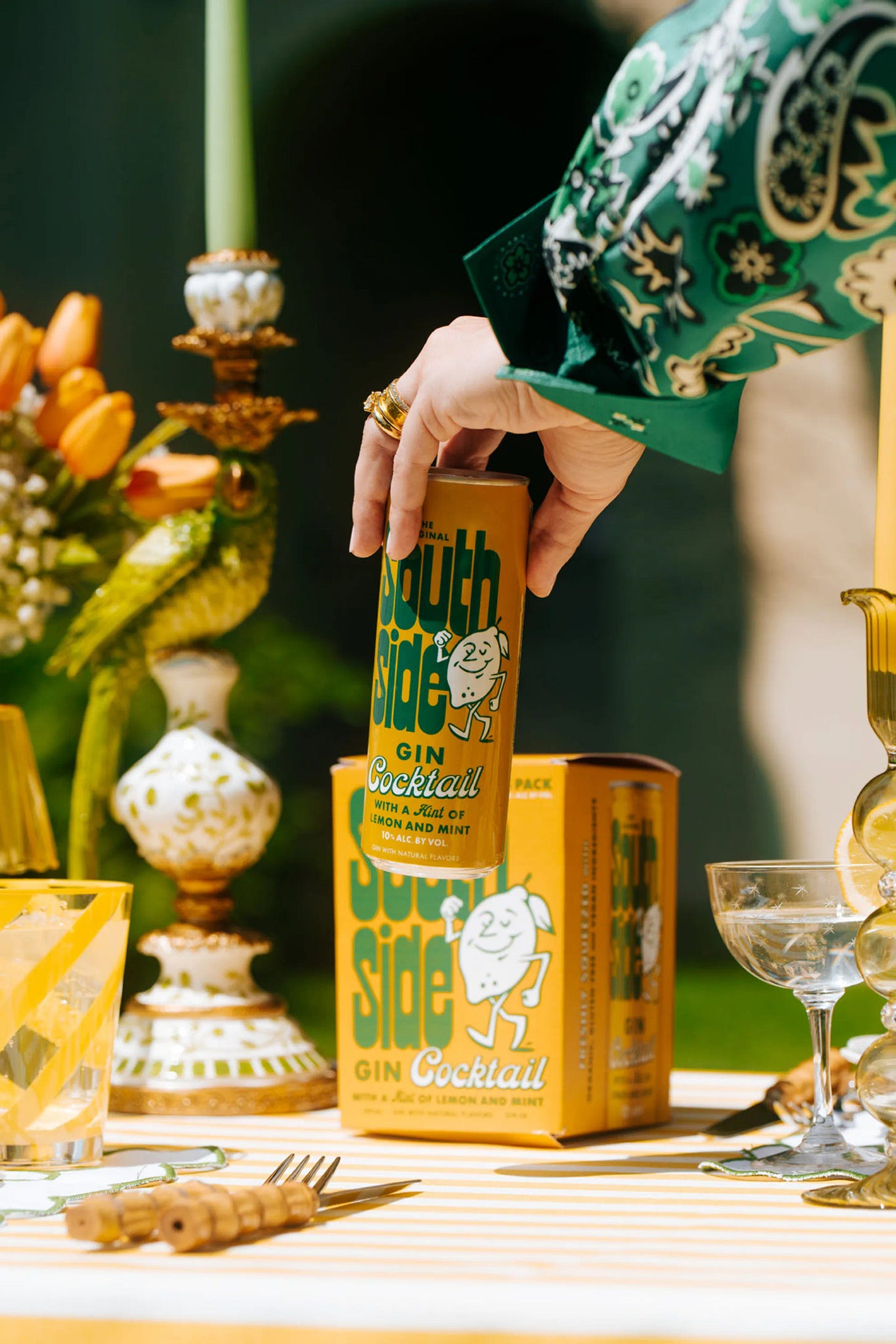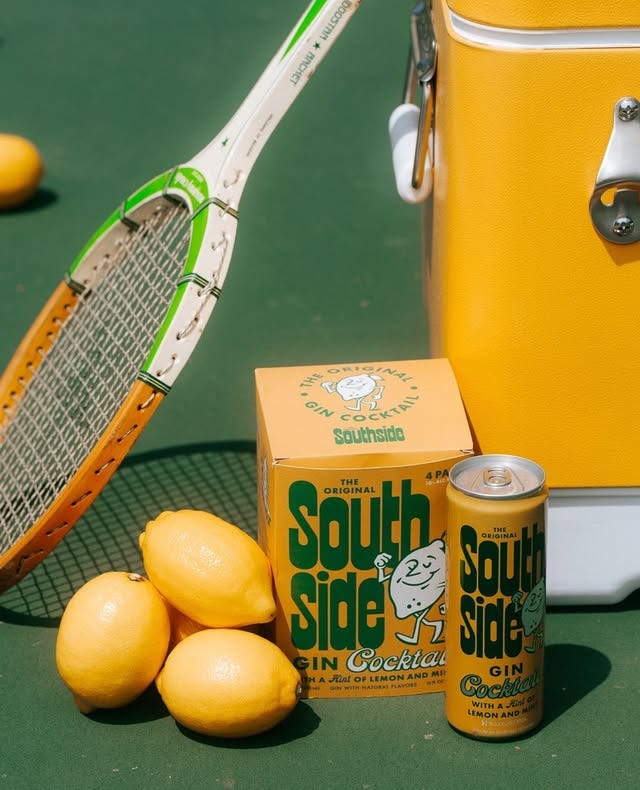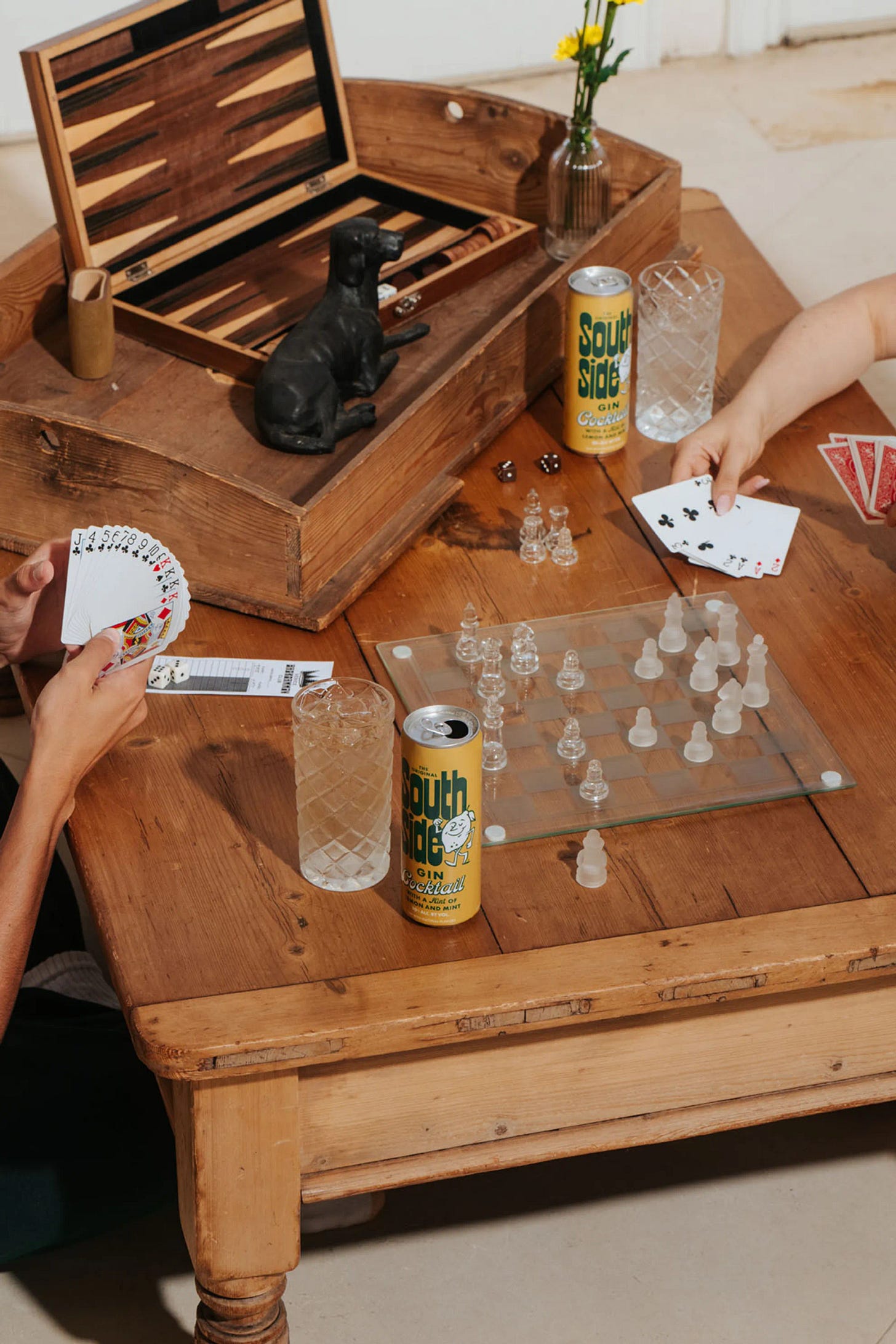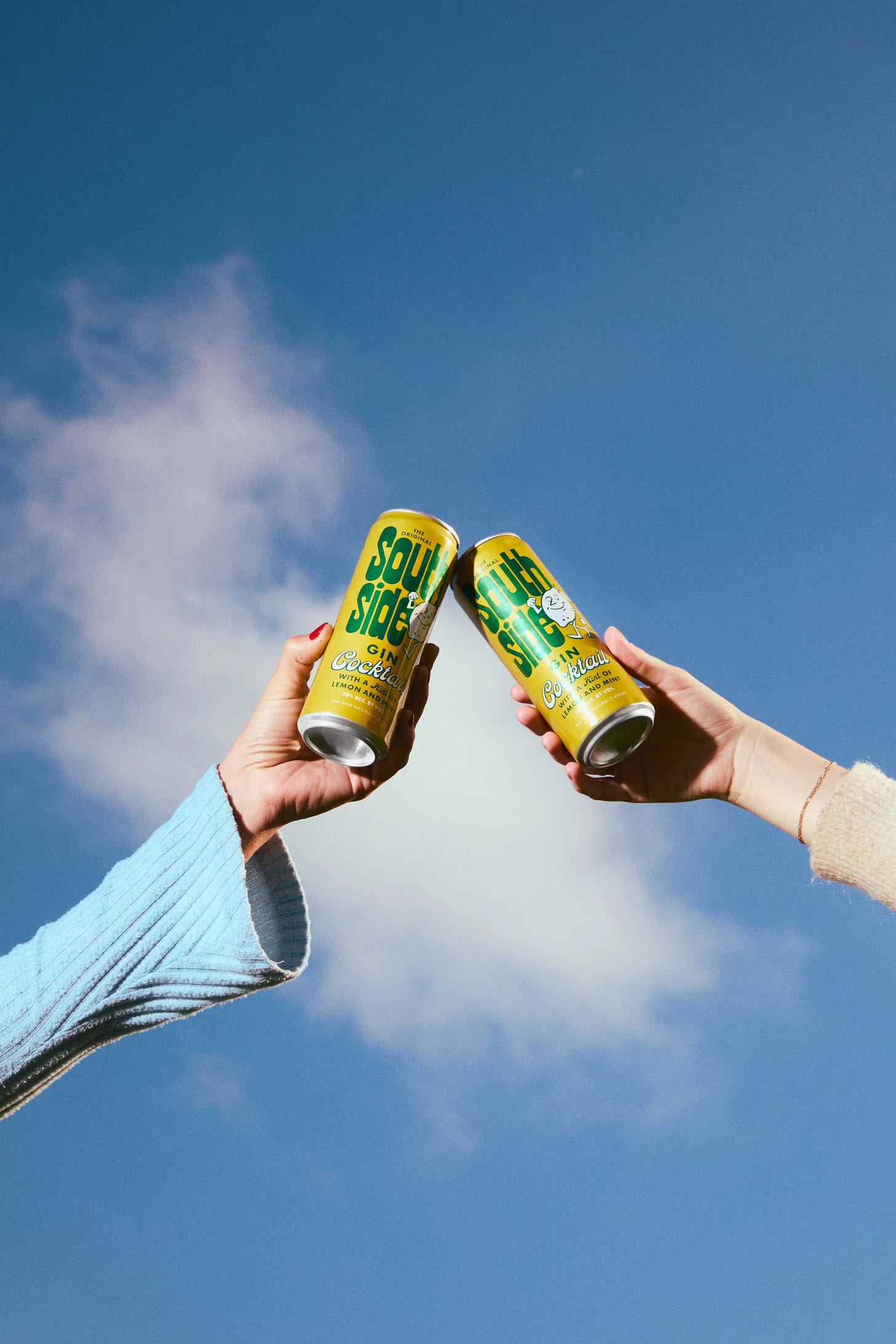NEWBIES: The Original Southside – a RTD riff on a century-old American cocktail
As the craze for all things canned continues, Southside is carving out its own gin-shaped space.
NEWBIES is our way of introducing you to up-and-coming brands (like VIGIE) doing interesting things. We’ll share quick profiles on how they’re building their businesses and what they’ve learned along the way. If you like this and other features on brand-building in the bev/alc space, we’d love you to subscribe.
The Original Southside is a RTD cocktail brand that specialises in one thing: a good, old-fashioned, gin, lemon and mint cooler. For founder Meredith Mills-Merritt the brand is part family recipe and part historic revival (something that’s apparent in Southside’s vintage-leaning visuals, but more on that later).
“Our company ethos is to bring back the best of the best cocktails that were lost in time for a revival of the fittest, if you will (a play on Charles Darwin’s survival of the fittest).”
The brief back story
Meredith – who previously worked in brand management and product innovation in the beauty industry – knows a good Southside when she drinks one. She based her brand’s recipe on the summertime cooler her mom makes to combat Oklahoma’s roasting hot summers – and it was over a year in development, with the final combo including organic cane sugar and Southside’s proprietary gin, compounded in the US.
“Many times, we think of cocktails in a can as being less satisfactory,” she says, “so my mission was to redefine for the consumer what they could expect in terms of a ready to drink cocktail.”
*A quick note on south sides
Side note: Meredith is super-enthusiastic about the Southside cocktail’s origin story. As she says it’s much-debated – some people cite Hugo Ensslin’s 1917 Recipes For Mixed Drinks, and some say it was created by Long Island’s South Side Sportsmen’s Club.
She’s sticking to the Prohibition-era tale, set in Chicago, which claims that the gangs of the north smuggled booze over the Canadian border, leaving the south side of the city to make the most of locally made spirits such as bathtub gin. Citrus, herbs and sugar were essential to disguising how disgusting that tasted, and so the south side cocktail was born.
What’s working
Although Meredith says she came into the spirits industry with zero experience, she’s quickly learned that liquid to lips is the most effective strategy for the brand – and it’s something the business prioritizes above all else. Their go to market and success strategies are:
Turning up at industry festivals
Setting up key partnerships (eg, the brand is partnered with Blade in New York, The Florida Panthers Hockey team and the LSU Tigers Athletic Department)
Running branded liquid to lips events including market tastings at local stores, and co-hosted dinners.
“Introducing the drink, having a few seconds of the consumer's time to educate them on Southsides, and getting them to try it are our only priority. Obviously, I’m biased, but it tastes pretty good and once people give us a shot, we work on building their mental availability to us as an option and work on creating more behaviorally loyal buyers.”
Branding is a big part of it
Clearly, Southside’s look and feel is another major part of Meredith’s business strategy. It’s got enough vintage flavour to stand out in a very busy RTD market, but it still feels current. That’s thanks to graphic designer Eric Warning.
“I told him that this was a ‘pie in the sky’ moment as it relates to design, and there really were no guardrails. The question we asked ourselves was: how do we make something look like it has been around for forever on shelves, but also feel new and fun? And that got us a good starting point.”
And when it comes to RTDs, a niche is essential
RTDs are experiencing a major surge in the US. Big names are expanding into this sub-category, new brands are launching in it, and it’s an area that’s continuing to grow year on year, even as wider alcohol sales struggle.
Meredith has been very deliberate in carving out a place for Southside and her advice is simple: “find your niche.”
“With our premium ingredient approach and choice of gin as the base spirit, this has allowed us to remain competitive and grow at a relatively quick pace. Retailers and distributors have many vodka- and tequila-based RTDs, but fewer gin-based ones. Same with certain partnerships in arenas and large venues that work with other brands.”
What’s not working
Online marketing and e-comm can be tough platforms for bev brands, and Meredith says Southside’s digital efforts haven’t seen great returns. They run the brand Instagram as more of a moodboard and place of discovery, but don’t bother with digital ads or other major investment into social media. TikTok is also off the menu, she says, because alcohol/bev content like theirs gets restricted.
“Rather than waste our time ‘feeding the beast’, as I call it, we turned our efforts and spend back to tastings IRL.”
Wooing distributors is also tricky
Meredith says one of the biggest hurdles for Southside is getting attention from strong distributors. Despite having consumer demand and multiple chain authorization in some markets, it’s still difficult to persuade certain distributors to take their product.
To address this, Meredith is adopting a market by market strategy, and says she works, quite literally, week by week to keep distributors updated on Southside’s progress in the hope that eventually she can win them over. According to her this tactic is paying off in some states, where Southside has built relationships with smaller indie distributors and is gradually upgrading to broader distribution networks.
Finally, we asked Meredith:
1)What’s the brutal truth about building a bev/alc brand?
If you want to build a brand in the United States you need to treat each state as a separate country. The laws and regulations as it relates to beverages are absolutely insane and unless you’re a subject matter expert in those areas, you’ll definitely need some help.
Additionally, it’s an expensive endeavor. It’s a lot of up-front capital consumption with the production runs, etc. so having some financially savvy skills or team members are a must.
2)What would you tell other bev/alc founders?
I would tell other founders to make sure that their product doesn’t just taste good, but is commercially viable. Going into the RTD and alcohol industry feels really sexy and fun (because it can be, at times) but it’s also exceptionally cutthroat.
Most of my time and most of my days are spent doing the non-sexy stuff just so we can survive and scale.
Keep your wits about you, dream big, and good luck!




